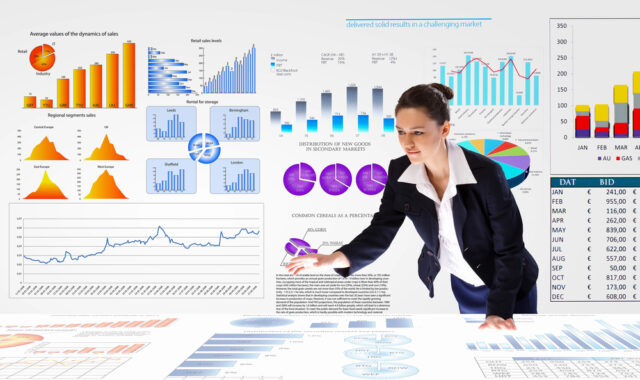How real-time analytics is powering innovation [Q&A]

Real-time analytics has rapidly emerged as a transformative technology, empowering businesses to harness immediate, actionable insights that drive personalized customer experiences, optimize operations, and manage risks in real time.
We spoke with Kishore Gopalakrishna, co-founder and CEO of StarTree to discuss the innovations behind this and how real-time analytics is becoming a cornerstone for innovation.
BN: Real-time analytics means different things to different people. How do you define it, and what distinguishes true real-time analytics from traditional approaches?
KG: Real-time analytics answers the fundamental question: 'What's happening now?' It's about getting immediate insights from data as it's generated, rather than waiting minutes, hours, or even days for batch processing.
There are two sides to achieving true real-time analytics: low data latency and low query latency. Low data latency ensures that fresh data is ingested and available for analysis almost instantly, while low query latency means that questions can be answered in milliseconds, even on massive datasets.
Historically, real-time analytics was limited to simple queries on small datasets because traditional architectures couldn't handle both speed and scale. But today, organizations like Uber, DoorDash, CrowdStrike, and Walmart are pushing the boundaries -- running complex analytics on petabyte-scale data in real time.
BN: How are companies integrating real-time analytics into their existing data architectures? What are the most common deployment patterns you're seeing?
KG: Companies are integrating real-time analytics as a complement to their existing data architectures, not a replacement. The most common pattern we see is real-time analytics platforms sitting alongside the data lakehouse, handling low-latency, high-concurrency queries while the lakehouse continues to manage the enterprise data model and batch workloads.
Another key integration point is the streaming platform -- real-time analytics is tightly connected to event streams, allowing organizations to analyze data the moment it arrives.
This unlocks new use cases that were previously impossible or cost-prohibitive, like dynamic pricing and hyper-personalized customer experiences. We're also seeing companies rebalance workloads -- migrating real-time use cases off batch-oriented technologies that were never designed for sub-second performance. By adopting a real-time analytics layer, they can drastically improve speed, efficiency, and cost-effectiveness without overburdening their existing infrastructure.
BN: Real-time analytics databases are playing a bigger role in observability. What's driving this shift?
KG: Many companies are struggling with observability solutions that are becoming cost-prohibitive while failing to deliver the real value -- rapidly pinpointing issues so teams can take action. They are actively looking for a better solution.
Early adopters are now building a modern observability stack centered around OpenTelemetry (OTel), Kafka, Pinot, and Grafana. This shift is driven by the need for cost-effective, high-speed analytics on large, multi-dimensional datasets.
Real-time databases like Pinot play a key role by efficiently processing metrics, logs, and traces, in a single platform, despite each having their own query dialects, while delivering sub-second response times at scale. By leveraging real-time analytics, organizations can move beyond costly, siloed observability tools and gain the ability to detect, diagnose, and resolve issues much faster.
BN: What role do you see RAG playing in how businesses interact with and retrieve information?
KG: Retrieval-Augmented Generation (RAG) is transforming how businesses interact with and retrieve information, but most implementations today are batch-oriented -- best suited for relatively static datasets like legal case law or academic research, where real-time updates aren't critical.
However, Real-Time RAG is emerging as a game-changer for use cases where freshness is essential -- think vector embeddings on time-series data, real-time anomaly detection, or breaking down SEC filings the moment they hit the wire. In these scenarios, businesses don't just need accurate retrieval -- they need the latest possible information to power AI-driven decisions.
This is where StarTree and real-time analytics come in. By providing sub-second querying over continuously updated data, StarTree enables AI applications to retrieve and generate insights based on the most current information, rather than outdated snapshots. Whether it's financial intelligence, fraud detection, or real-time operational insights, StarTree ensures that AI models aren’t just smart -- they're up to the second.
BN: We're seeing a shift from traditional applications to AI-driven agents that can autonomously interact with data and users. How does real-time analytics power this transition, and what does it mean for the future of AI-driven applications?
KG: AI agents are the new apps. Instead of navigating multiple screens or manually pulling reports, users will simply interact with AI-driven agents that work seamlessly across systems -- breaking free from the siloed constraints of traditional applications.
This shift is especially relevant to us because the most popular apps in the world today -- Uber, DoorDash, Stripe, and more -- are already powered by Pinot for real-time insights. Pinot isn't just fast; it handles extreme concurrency, processing 20K, 30K+ queries per second to keep these applications responsive and data-driven.
AI agents will be even 'chattier' than apps, constantly retrieving, analyzing, and acting on real-time data. To power this next-generation AI ecosystem, businesses will need real-time analytics at massive scale. With Pinot's ability to deliver fresh insights instantly and handle extreme query loads efficiently, StarTree is uniquely positioned for the agentic AI era.
Image credit: SergeyNivens/depositphotos.com